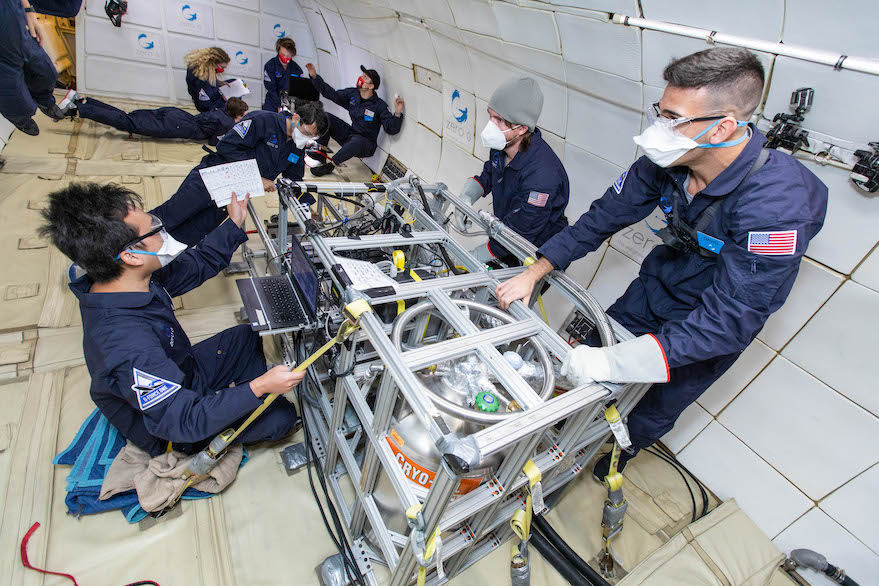Op-ed | NASAs Space Technology Mission Directorate is More Important Now Than Ever

The role government-sponsored research and development plays in the international economic competitiveness of the U.S. – especially high-risk, high-reward research performed by a mix of academia, industry, and government – has been a major topic of conversation in Washington. One often overlooked, yet successful, entity is NASA’s Space Technology Mission Directorate (STMD). STMD advances the next generation of space technologies through its own R&D, through investments in novel, American-made technologies, and through its partnerships with other government agencies, industry, and academia. It is responsible for helping to bring about the kinds of technologies that humanity has only conceptualized in science fiction, such as innovative power systems for the Moon, in-situ resource utilization, and advanced manufacturing techniques.
This small entity has been remarkably successful at generating economic activity via spin-offs and technology developments, as well as helping enable innovative breakthroughs in technology. STMD manages more than 1,400 technology projects and approximately 140 planned flight demonstrations through 850 partnerships (industry, academia, government), across all 50 states. These investments don’t just benefit our endeavors in space – they also improve the lives of everyday Americans here on Earth. NASA research and development has led to satellite navigation, firefighting equipment, earthquake-proof shock absorbers, inexpensive ventilators, and more. We can only imagine how far modest plus-ups in the STMD budget, coupled with the investment of the private sector, could go towards furthering technology development.
STMD is uniquely situated because of the breadth of its investments and technology demonstrations. It partners with academia, students, small businesses, industry, and more. This all-of-the-above approach allows STMD to advance the capabilities of the U.S. faster and more effectively by using its resources and time to advance creative and varied ideas.
When former NASA Administrator Charlie Bolden announced the creation of STMD, he said “a top priority of NASA is to invest in cross-cutting, transformational technologies. We focus on collaboration with industry and academia that advances our nation’s…goals while maintaining America’s competitive edge in the new innovation economy.” That sentiment was true then and is even more salient now. Robust funding for STMD is essential in maintaining our international leadership role as nations like China step up their investments in space technology with an eye toward dominating the space domain. In fact, China’s 2021 white paper on its space program identifies space technology as the “core of its space industry.” With our strong commercial space economy and democratic values, the United States has an undeniable advantage in its ability to harness innovation and entrepreneurship in a way that China cannot. STMD provides a clear path for the U.S. to leverage its commercial and academic strength to push the boundaries of technological development.
In 2009, just prior to the creation of STMD, the National Research Council expressed concern about the state of space technology. In an alarming report, they stated that the United States has been living off of innovations developed in the past due to “financial support for this technology base [eroding] over the years.” This led to a reinvigoration of the space technology thrust at NASA and, ultimately, the creation of STMD. Congress, too, has recognized the importance of STMD, most recently by codifying its existence in the bipartisan NASA Transition Authorization Act of 2017 (P.L. 115-10). However, without robust funding for the entity, NASA risks returning to a position of complacency.
In a challenging budget environment where Members of Congress must question the return of each taxpayer dollar spent, STMD has proven that it is a worthy investment. We are facing a formidable challenge to U.S. leadership in space that can only be overcome by harnessing the best ideas from across the nation. The commercial space industry is ready to continue to partner with NASA to advance the innovative technologies of the future and to help the nation go further and faster in space and science, as numerous studies by the National Research Council and others have stated is necessary. Congress should fully fund NASA’s $25.97 billion FY23 budget request, including the full requested amount for STMD, as it drafts and advances the FY23 appropriations bills.
Karina Drees is the President of the Commercial Spaceflight Federation, the leading national trade association for the commercial space industry, with nearly 100 member companies and organizations across the United States.
Related
ncG1vNJzZmiroJawprrEsKpnm5%2BifLC8jJ6bZqaRqK60edKpmJydXamypLTNqKOon6liuqq%2F0qKmp2WUnr%2Bmr9OoqZqslWK2tHnMqKmeZZmivbC%2B05qlrWWepMRuwMeapWadppq%2FcA%3D%3D